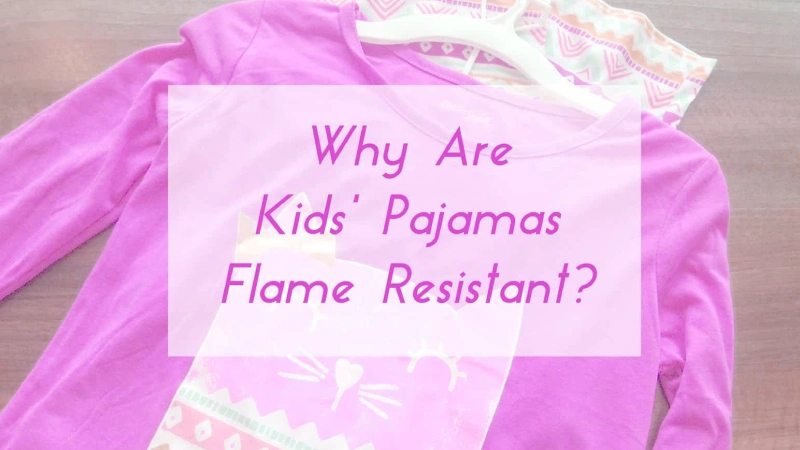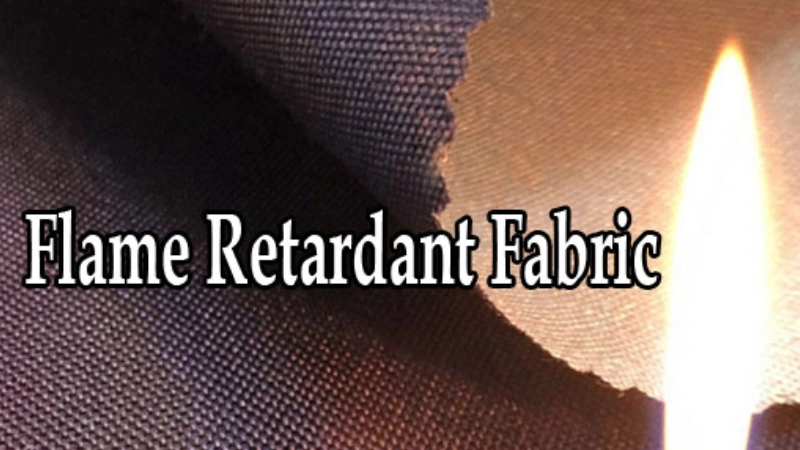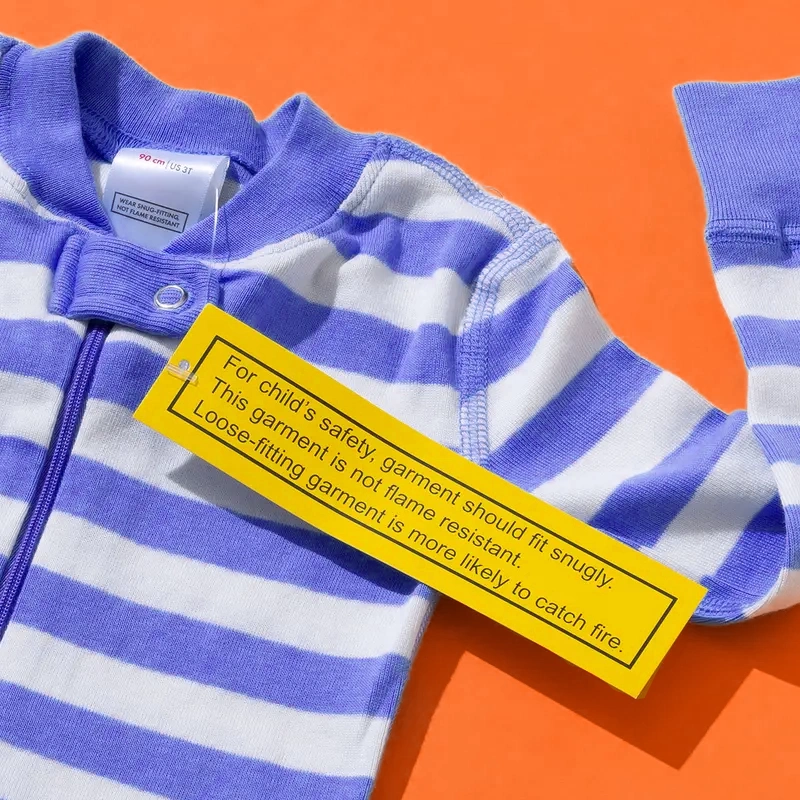As a dedicated manufacturer of children’s pajamas, we know that safety is the top priority. Combining market demand and production experience, let’s understand why are kids pajamas flame resistant.

Flame-resistant kids pajamas protect your child from fire-related injuries. Loose-fitting cotton garments contribute to nearly 300 burn injuries annually. Flame-resistant fabrics reduce these risks, especially during vulnerable moments like bedtime. Studies show that properly treated materials offer better thermal protection, ensuring your child’s safety while they rest peacefully in their pajamas.
Key Takeaways
- Flame-resistant pajamas help keep kids safe from fire injuries, especially while sleeping.
- Tight-fitting designs limit airflow, stopping flames from spreading easily and keeping kids safer.
- Pick pajamas made of treated polyester or tight cotton to meet safety rules.
History and Regulations of Flame-Resistant Kids Pajamas
The Flammable Fabrics Act
The Flammable Fabrics Act (FFA) marked a turning point in textile safety. Enacted in 1953, this law aimed to protect individuals from clothing that could ignite easily. Over time, its scope expanded to include interior furnishings and other materials. For kids pajamas, the FFA mandates strict compliance with flammability tests. These tests ensure that sleepwear can resist small open-flame sources like matches or candles.
The Consumer Product Safety Commission (CPSC) enforces these standards under 16 C.F.R. part 1615 (sizes 0-6X) and part 1616 (sizes 7-14). By regulating the flammability of kids pajamas, the FFA has significantly reduced the risk of burn injuries among children.
| Year | Event Description |
|---|---|
| 1953 | Enactment of the Flammable Fabrics Act (FFA) to protect individuals from flammable clothing. |
| 1967 | Amendment to expand coverage to include interior furnishings and other materials. |
| N/A | CPSC established standards for children’s sleepwear to prevent burns and injuries. |
Incidents That Shaped Safety Standards
Fire-related incidents involving children have driven the evolution of sleepwear safety standards. In 1970, clothing fires caused 60 deaths among children under 15. These tragedies highlighted the urgent need for stricter regulations. By 1975, the CPSC introduced federal flammability standards specifically for kids pajamas.
The impact of these standards has been profound. By 1987, fatalities from clothing fires among children dropped to just two. This dramatic reduction demonstrates the effectiveness of flame-resistant sleepwear in preventing injuries and saving lives.
- Key milestones in sleepwear safety:
- 1972: Creation of the CPSC to enforce safety standards.
- 1975: Federal flammability standards for children’s sleepwear published.
- 1977: Ban on tris, a flame retardant linked to health risks.

Why Sleepwear Safety Standards Are Essential
Sleepwear safety standards protect children during one of their most vulnerable times—sleep. Loose-fitting cotton garments can ignite quickly, posing a serious risk. Flame-resistant kids pajamas reduce this danger by either resisting ignition or slowing the spread of flames.
These standards also address health concerns. In 1977, the flame retardant tris was banned due to its harmful effects. This decision led to safer alternatives, such as snug-fitting cotton pajamas, which offer natural flame resistance without chemical treatments.
By choosing sleepwear that meets these standards, you ensure your child’s safety and comfort. Flame-resistant pajamas provide peace of mind, knowing your child is protected from fire-related injuries.
How Kids Pajamas Are Made Flame Resistant
Materials Used in Flame-Resistant Pajamas
The materials used in kids pajamas play a crucial role in their flame resistance. Synthetic fabrics like polyester are commonly used because they are less likely to catch fire compared to untreated cotton. However, these materials are naturally flammable, so manufacturers often treat them with flame-retardant chemicals to meet safety standards.
Strict regulations ensure that every component of the garment, including the fabric and seams, passes flammability tests. For example, the “char test” evaluates how a material reacts when exposed to an open flame. This test determines whether the fabric needs additional chemical treatments to enhance its fire resistance.
Natural fibers like cotton can also be used in flame-resistant pajamas. While untreated cotton is more flammable, snug-fitting designs can make it a safer option without requiring chemical treatments.
- Key facts about materials:
- Polyester is treated with brominated flame retardants to reduce its combustibility.
- Cotton is less flammable but often relies on snug-fitting designs for safety.
- All fabrics must comply with flammability standards to ensure your child’s safety.
Snug-Fitting Designs and Fire Safety
Snug-fitting designs are another essential feature of flame-resistant kids pajamas. These designs reduce the amount of air between the fabric and the skin, which helps slow the spread of flames. Loose-fitting garments, on the other hand, can fan flames and increase the risk of severe burns.
Close-fitting sleepwear is particularly effective when made from natural fibers like cotton. Since cotton is less flammable than synthetic fabrics, snug designs eliminate the need for chemical treatments. This makes them a safer and more comfortable option for your child.
- Benefits of snug-fitting designs:
- They are less likely to catch fire compared to loose clothing.
- They minimize the spread of flames by reducing airflow.
- They provide a safer alternative to chemically treated fabrics.
Chemical Treatments vs. Natural Flame Resistance

Manufacturers use two main approaches to make kids pajamas flame resistant: chemical treatments and natural flame resistance. Chemical treatments involve applying flame-retardant substances to synthetic fabrics like polyester. These treatments help the fabric resist ignition and slow the spread of flames.
Natural flame resistance, on the other hand, relies on the inherent properties of certain materials and designs. For example, snug-fitting cotton pajamas offer fire safety without the need for chemicals. This approach is ideal for parents who prefer sleepwear without added treatments.
Both methods must comply with strict safety standards. Non-tight-fitting sleepwear, for instance, must pass flammability tests to ensure it meets the required safety levels. By understanding these options, you can choose the best pajamas for your child’s needs.
| Approach | Key Features | Example Fabrics |
|---|---|---|
| Chemical Treatments | Uses flame-retardant chemicals to resist fire | Polyester |
| Natural Flame Resistance | Relies on material properties and snug designs | Cotton |
| Size | Age | Height | Chest | Waist |
|---|---|---|---|---|
| 0-6M | 0-6 mos | 20-26 in (51-66 cm) | 16-18 in (41-46 cm) | 16-17 in (41-43 cm) |
| 6-12M | 6-12 mos | 26-30 in (66-76 cm) | 18-19 in (46-48 cm) | 17-18 in (43-46 cm) |
| 12-18M | 1-1.5 yrs | 30-32 in (76-81 cm) | 19-20 in (48-51 cm) | 18-19 in (46-48 cm) |
| 2T | 2 yrs | 32-34 in (81-86 cm) | 20-21 in (51-53 cm) | 19-20 in (48-51 cm) |
| 3T | 3 yrs | 34-38 in (86-97 cm) | 21-22 in (53-56 cm) | 20-21 in (51-53 cm) |
| 4T | 4 yrs | 38-40 in (97-102 cm) | 22-23 in (56-58 cm) | 21-22 in (53-56 cm) |
| 5T | 5 yrs | 40-42 in (102-107 cm) | 23-24 in (58-61 cm) | 22-23 in (56-58 cm) |
Safety Benefits and Tips for Choosing Kids Pajamas
How Flame-Resistant Pajamas Protect Children
Flame-resistant pajamas provide an essential layer of protection for children during fire incidents. These garments are designed to either resist ignition or slow the spread of flames, reducing the risk of severe burns. Tight-fitting sleepwear, in particular, offers enhanced safety by minimizing the air between the fabric and the skin. This reduces the oxygen supply that flames need to grow.
The Consumer Product Safety Commission (CPSC) has reported virtually no injuries associated with tight-fitting sleepwear. This demonstrates their effectiveness in preventing fire-related injuries.
Additionally, federal flammability standards ensure that all kids pajamas meet strict safety requirements. Materials like treated cotton and modacrylics have been shown to perform better in fire safety tests compared to untreated fabrics. These standards have significantly reduced the number of fire-related injuries among children.
Tips for Selecting Safe Sleepwear
Choosing the right sleepwear for your child involves understanding safety features and material properties. Here are some tips to help you make an informed decision:
- Opt for snug-fitting designs: These reduce airflow, making it harder for flames to spread.
- Check the fabric type: Look for materials like snug-fitting cotton or treated polyester, which comply with safety standards.
- Avoid loose or oversized garments: These increase the risk of ignition and can fan flames.
| Fabric Type | Safety Level | Notes |
|---|---|---|
| Bamboo | Safe | Comfortable and breathable, suitable for children’s sleepwear. |
| Snug-fitting Cotton | Safe | Designed to minimize air flow, reducing fire risk. |
| Loose-fitting | Unsafe | Increases risk of catching fire when near flames. |
| Oversized | Unsafe | Can easily get ignited in the presence of a burn. |
When shopping, look for certifications like OEKO-TEX or CPSIA, which indicate compliance with safety regulations.
Addressing Misconceptions About Flame Resistance
Some parents worry about the use of flame-retardant chemicals in kids pajamas. While these concerns are valid, it’s important to separate fact from fiction.
- Flame retardants are sometimes linked to health risks, but many modern treatments are safer and regulated.
- Snug-fitting cotton pajamas offer a chemical-free alternative, providing natural flame resistance.
- Studies show that flame-resistant sleepwear significantly reduces fire-related injuries, proving their effectiveness.
Tight-fitting pajamas are less flammable because fires need oxygen to burn. Without air between the fabric and skin, flames struggle to grow.
By understanding these facts, you can confidently choose sleepwear that balances safety and comfort for your child.
Flame-resistant pajamas play a crucial role in protecting your child from fire-related injuries. They reduce risks during vulnerable moments like sleep.
- The National Fire Protection Association (NFPA) opposed relaxing flammability standards, citing increased risks.
- Historical data confirms these standards significantly reduced injuries.
- A GAO report highlighted the need for better consumer education on safety standards.
Prioritize safety when choosing sleepwear to ensure peace of mind and better protection for your child.
FAQ
Why Are Kids’ Pajamas Flame-Resistant?
In the U.S. and many other countries, children’s sleepwear must meet strict flammability standards to reduce burn risks. Here’s why:
1. Safety Regulations (CPSC Standards)
The U.S. Consumer Product Safety Commission (CPSC) requires that kids’ pajamas (sizes 9 months to 14 years) be either:
Flame-resistant (self-extinguishing) – Made from treated fabrics that resist burning.
Snug-fitting – Tight-fitting pajamas reduce air flow, making them less likely to catch fire.
Why Is This Important?
Children’s sleepwear is near open flames (candles, stoves, heaters) and electrical sources.
Loose fabrics can ignite quickly, while flame-resistant (FR) materials stop burning when removed from fire.
How Are Pajamas Made Flame-Resistant?
Chemical Treatment: Some fabrics (like polyester) are treated with flame-retardant chemicals.
Tight Weave & Natural Fibers: Some fabrics (like snug-fitting cotton) pass tests without chemicals by being less flammable.
What Should Parents Look For?
Tags should say “Flame-Resistant” or “Must Be Snug-Fitting.”
Avoid oversized sleepwear—it’s riskier if not FR-treated.
Wash carefully (some FR treatments weaken after many washes).
Conclusion
Flame-resistant kids pajamas are more than just bedtime attire—they’re an essential layer of safety. With strict regulations in place, such as those enforced by the CPSC and the Flammable Fabrics Act, these pajamas are designed to protect children from potential fire hazards.
Whether through snug-fitting cotton that naturally resists flames or synthetic materials treated with flame-retardants, the goal remains the same: minimize fire risks while maximizing comfort. Parents should prioritize tight-fitting designs and certified materials when selecting sleepwear. Misconceptions about chemical treatments can be addressed with education and safer alternatives.
As data shows, safety standards have drastically reduced injuries and fatalities over time. By choosing flame-resistant pajamas, you’re taking a proactive step toward safeguarding your child during one of their most vulnerable moments—sleep. Safety starts with informed choices.


